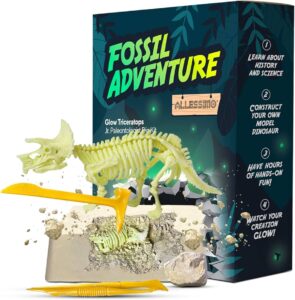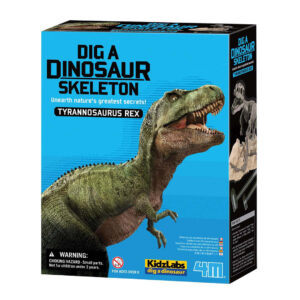What Sound Does a Dinosaur Make? Words to Describe It
Dinosaur sounds are speculative but often described as roars, bellows, or trumpets. No exact recording exists, but movie depictions influence these descriptions.
Dinosaurs dominated the Earth millions of years ago, and while their fossilized bones provide tangible evidence of their existence, their vocal range remains a topic of fascination and imagination.
Scientists theorize about dinosaur sounds by studying the structure of bird and reptile vocalizations, both modern relatives of dinosaurs.
The sounds made by dinosaurs in popular media, especially films like “Jurassic Park,” commonly portray them with deep, thunderous roars, guttural growls, or piercing screeches.
These recreations stem from artistic interpretations, as the exact timbre and pitch of dinosaur calls are unknown.
Nevertheless, they play a significant role in public perception, shaping our cultural and scientific dialogues about these ancient creatures and their possible forms of communication.
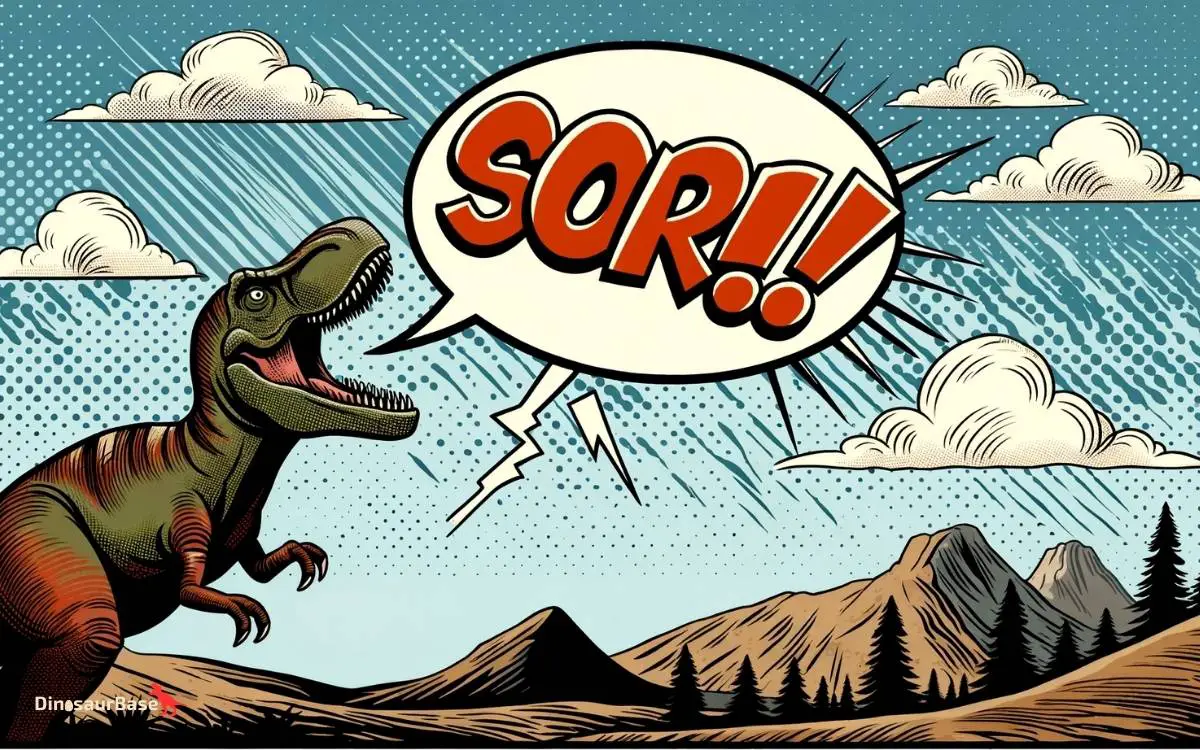
The Roar Of The Past: Imagining Dinosaur Sounds
Have you ever wondered what sound a dinosaur might have made? Movies give us roaring giants, but real science offers a more complex picture. Let’s dive into the world of prehistoric sounds and imagine the roar of the past.
Fossil Evidence And Vocal Anatomy
Fossils do more than show a dinosaur’s shape. They hint at how it may have sounded. Dinosaur skulls and chest cavities suggest their vocal abilities. Here’s what the evidence tells us:
- Skull shape and air passages hint at possible sounds.
- Resonating chambers in skulls point to how sounds could amplify.
- Chest cavity size indicates lung capacity and possible sound volume.
Modern Relatives And Sound Approximation
Dinosaurs have living relatives. Birds and reptiles help us guess dinosaur sounds. Here’s how we connect the past and present:
| Modern Relative | Insight into Dinosaur Sounds |
|---|---|
| Birds | Vocal range and pitch clues |
| Reptiles | Hisses and low tones could reflect larger dinosaurs |
By studying these creatures, we approximate what dinosaurs could have sounded like. We blend fossil records and living animals to bring ancient roars to life.
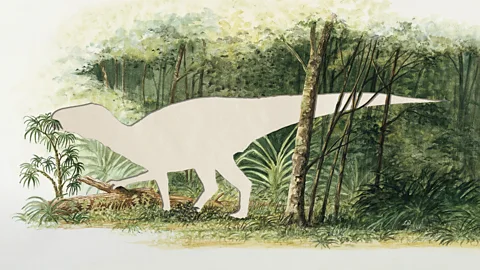
Credit: www.bbc.com
Linguistic Representations: Words In Our Vocabulary
When we imagine dinosaurs, a symphony of sounds fills our thoughts. We can’t travel back in time to hear them.
Instead, we rely on words to paint these ancient sonic landscapes. Words serve as a bridge, connecting us to a world ruled by these majestic creatures.
Let’s delve into how we use descriptive terms to bring dinosaur sounds to life in our conversations and storytelling.
From Roars To Growls: Descriptive Terms
Imagine a giant Tyrannosaurus Rex thundering through the forest, its roar cutting through the air.
We use specific words to describe such powerful sounds:
- Roar: A deep, loud cry representing power and dominance.
- Growl: A low, guttural vocalization often linked with aggression.
- Screech: A high-pitched, piercing sound indicative of calling or alarm.
- Squawk: A sharp, harsh cry similar to birds, suggesting communication.
- Trumpet: A loud, resonant noise, like an elephant’s call, signaling contact.
Each term contributes to our understanding of possible dinosaur communications. We visualize their interactions through these words.
The Influence Of Pop Culture On Dinosaur ‘language’
Pop culture has shaped our perception of dinosaurs through movies and books. For instance, the iconic T. rex roar from Jurassic Park is etched in our minds. This has influenced the way we think about dinosaur sounds.
Consider these popular pop culture references:
| Dinosaur | Description | Pop Culture Example |
|---|---|---|
| Velociraptor | Cunning and communicative | Sophisticated vocalizations in Jurassic Park |
| Brachiosaurus | Gentle and massive | Deep, bellowing calls in Land Before Time |
| Triceratops | Defensive herbivore | Gruff snorting in Jurassic World |
These films have left a strong imprint on our dinosaur sound vocabulary. They tie specific attributes to each species’ supposed voice.
Paleo-acoustics: The Science Of Ancient Sounds
Have you ever wondered how dinosaurs might have sounded? Paleo-acoustics digs deep into that mystery.
This branch of science blends paleontology and acoustics to unveil the prehistoric audio landscape. Scientists use clues etched in fossils to generate the possible voices of the ancient giants.
Resonating Chambers: Clues From Skeletons
Dinosaurs left behind more than just bones; they left potential sound signatures. Experts study skull cavities and nasal passages, known as resonating chambers. These structures help predict the sounds that dinosaurs could produce.
- Hadrosaurs: Duck-billed dinosaurs with complex crests likely created distinctive calls.
- Tyrannosaurus rex: Its massive skull suggests deep, resonating roars.
Computerized Simulations And Acoustic Modeling
Modern technology breathes life into ancient remains. Computerized simulations pair up with acoustic modeling to create soundscapes. Scientists input fossil data into software. This generates likely dinosaur voices.
| Dinosaur Type | Estimated Sound |
|---|---|
| Velociraptor | High-pitched hisses or shrieks |
| Brachiosaurus | Low-frequency rumbles |
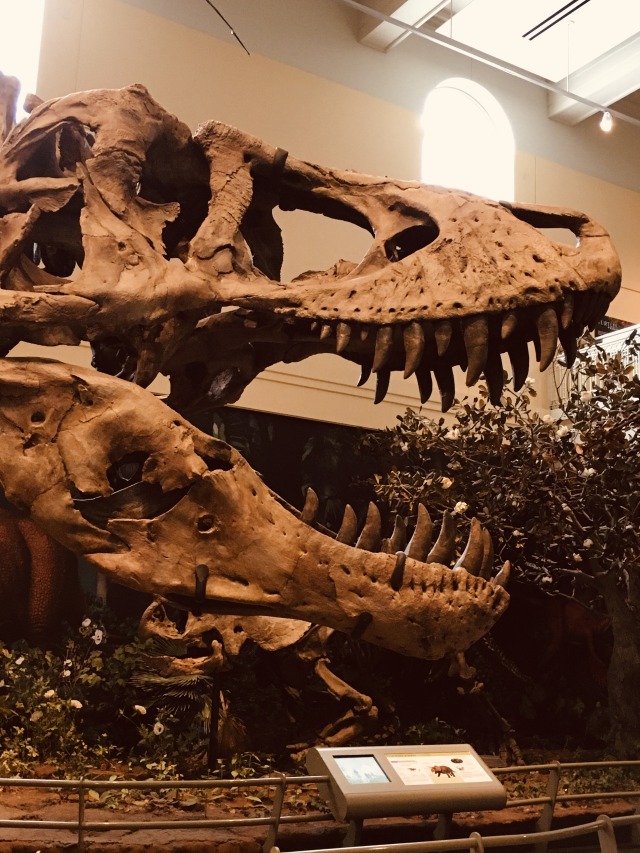
Credit: carnegiemnh.org
The Artistic License: Sounds In Movies And Books
The Artistic License: Sounds in Movies and Books immerses audiences in a world where dinosaurs roar to life.
Directors and authors often employ creative freedom to fill the silent fossil record with vibrant cries, bellows, and roars.
This not only captivates our imagination but also bridges the gap between ancient earth and our present-day curiosity surrounding these extinct beasts.
Jurassic Park’s Iconic Roar: A Case Study
Steven Spielberg’s Jurassic Park revolutionized dino sounds. Sound designers blended together critter noises to craft something new and memorable.
They used elements from elephants, tigers, and even penguins to create the signature roar of the T-Rex. This fusion of sounds produced one of the most recognized roars in cinematic history.
- Elephants: Low-frequency rumblings for power.
- Tigers: For a fearsome edge.
- Penguins: High-pitched tones for uniqueness.
Dinosaurs’ Vocal Diversity In Fiction
Fictional works depict a vast array of dinosaur vocalizations. Authors and filmmakers often assign sounds based on the size, behavior, or setting of these prehistoric creatures. This section explores how variety in dinosaur sounds enriches storytelling.
| Dinosaur | Typical Sound Description |
|---|---|
| Large Predators | Bone-chilling roars and growls |
| Herbivores | Deep calls and trumpet-like sounds |
| Small Predators | Sharp screeches and rapid chirps |
| Flying Reptiles | Piercing cries reminiscent of birds |
Sound choices greatly impact the audience’s experience. They convey the nature and mood of scenes, from tranquil to terrifying.
Educational Perspectives: Teaching Dinosaur Sounds
Dinosaurs dominated the Earth millions of years ago. Yet, scientists can make best guesses about the sounds they made. Imagine a big, roaring T-Rex or a sharp chirping Velociraptor in a science class.
Teachers can make dinosaur lessons exciting with sound. Sound makes dinosaurs come alive for students of all ages. It’s fun and educational!
Interactive Exhibits And Sound Stations
Museums often have interactive exhibits. Here, students can hear the roaring, trumpeting, and squawking of dinosaurs.
This brings textbooks to life. Sound stations let students press buttons to hear different dinosaur sounds.
This is a hands-on learning experience!
- Touch and Hear: Kids touch dinosaur models to hear sounds.
- Sound Matching Games: Students match sounds to the right dinosaur.
- Guess the Dinosaur: Kids guess the dinosaur from its sound, learning while having fun.
Incorporating Sound Into Dinosaur Curricula
Teachers can create exciting science lessons about dinosaurs. They use sounds to spark curiosity. Sound engages students more than pictures alone. Here’s how sounds can become part of learning:
- Storytelling with Sounds: Stories about dinosaurs include roars and calls.
- Creating Dinosaur Soundscapes: Students use audio tools to create their own dinosaur environment.
- Interactive Quizzes: Test knowledge with quizzes that use dinosaur sounds.
| Sounds for Engagement | Learning Outcomes |
|---|---|
| Dinosaur Roars | Understand dinosaur behavior |
| Chirping and Trumpeting | Learn about communication |
| Footsteps and Movement | Explore the physical presence |
Frequently Asked Questions On What Sound Does A Dinosaur Make? Words To Describe It
What Sound Do Dinosaurs Make?
Scientists speculate about dinosaur sounds, but exact noises are unknown since vocal organs don’t fossilize. Dinosaurs may have grunted, roared, or used other communication methods.
Do Dinosaurs Roar Or Rawr?
Dinosaurs likely used a variety of sounds, but “roar” is speculation from movies. Scientists believe some dinosaurs made calls resembling birds or reptiles, not necessarily “roars” or “rawrs. “
What Sound Do You Think A Dinosaur Would Have Made Give It A Name?
A dinosaur might have emitted a deep, resonant roar, categorized as a “Rumbellic Roar. “
How Did Dinosaurs Make Sound?
Dinosaurs likely produced sounds using vocal cords or resonating air in nasal passages, similar to modern birds and reptiles. Specific dinosaur species may have had unique sound-making adaptations.
Conclusion
Diving into the prehistoric echoes, we’ve explored the fascinating sounds dinosaurs may have made. From bellows to hoots, the vocabulary we’ve discussed paints a vivid soundscape of ancient life.
As paleontologists unearth more secrets, our understanding will evolve. Until then, let these words stir your imagination and transport you to a world millions of years in the making.

